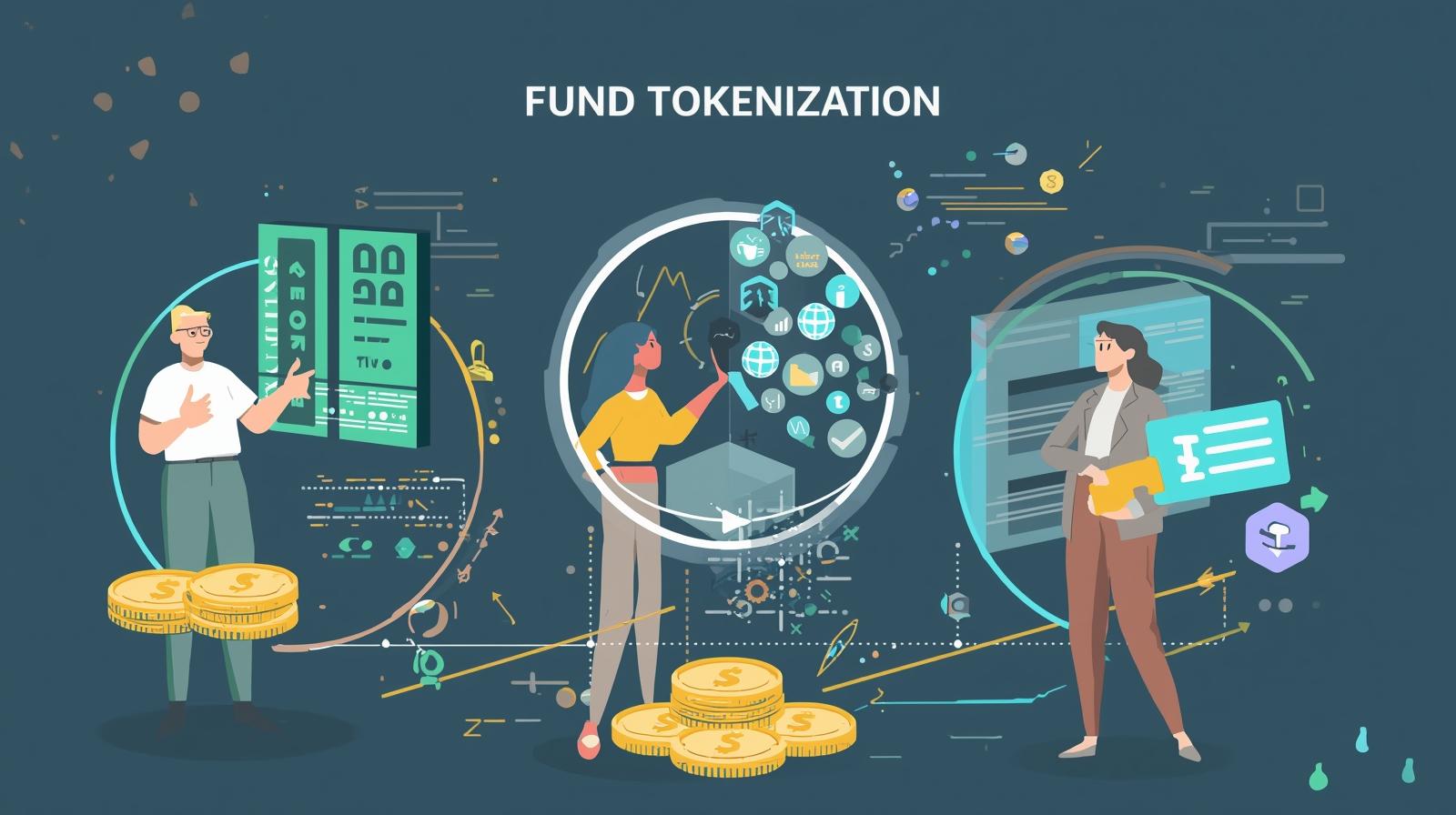
The global financial market is on the verge of a major digital revolution — and fund tokenization is leading the charge. According to Boston Consulting Group (BCG), $16 trillion worth of assets could be tokenized by 2030, accounting for nearly 10% of global GDP. Mutual funds, ETFs, and other securities are quickly embracing blockchain technology to improve accessibility, liquidity, and transparency.
The rise of blockchain in funds is redefining how we manage and trade investments, empowering both institutional and retail investors to participate in previously exclusive markets. Platforms specializing in fund tokenization are paving the way for secure, compliant, and borderless investing.
At its core, fund tokenization means representing traditional investment products — like mutual funds, ETFs, or securities — as digital tokens on a blockchain. Each token stands for a fraction of ownership in the underlying fund.
Through blockchain-based ledgers, fund managers can issue, trade, and track tokens with complete transparency. Investors, in turn, can tokenize funds to gain access to global assets in real-time, with lower costs and faster transactions.
The traditional fund industry has long struggled with inefficiencies — manual recordkeeping, intermediaries, and settlement delays. Blockchain in funds eliminates these hurdles by digitizing ownership records and automating transactions through smart contracts.
Let’s see how this innovation changes the game for fund managers and investors alike:
In the traditional market, fund settlements take T+2 days (trade date plus two). Blockchain reduces that to T+0, meaning near-instant settlement and reduced counterparty risk.
Every tokenized transaction is recorded on an immutable ledger, ensuring visibility into fund holdings, asset performance, and investor rights.
Investors no longer need large capital to access high-value mutual funds or ETFs. Tokenized funds allow users to buy fractions, making investing more inclusive.
Blockchain-powered fund tokenization breaks down geographical barriers, allowing investors worldwide to participate in regulated investment vehicles.
Traditional funds often restrict withdrawals or redemptions to specific time frames. Tokenized funds, however, can be traded 24/7 on blockchain marketplaces, improving liquidity for investors.
Fund tokenization platforms eliminate intermediaries such as custodians and transfer agents. This reduces operational costs, benefiting both fund issuers and investors.
Smart contracts embedded within tokenized funds can automate compliance checks, dividend distributions, and reporting, streamlining fund operations.
Modern fund tokenization platforms follow strict regulatory standards, such as KYC (Know Your Customer) and AML (Anti-Money Laundering) protocols, ensuring transparency and investor protection.
Specialized fund tokenization platforms are the backbone of this digital transformation. These platforms allow asset managers, financial institutions, and investors to tokenize funds quickly and securely.
According to Cointelegraph Research, more than $800 million in tokenized fund assets were issued in 2024 alone, and this number is expected to grow exponentially as institutional adoption rises.
In 2023, Franklin Templeton became the first major asset manager to issue a tokenized mutual fund on the Stellar blockchain. The fund uses digital shares for faster settlement and improved transparency.
BlackRock, the world’s largest asset manager, has been exploring blockchain in funds to enhance ETF management efficiency. Its blockchain-enabled ETF infrastructure is expected to reduce settlement times and boost investor confidence.
Hamilton Lane, a global investment manager, partnered with Securitize to tokenize over $2.1 billion worth of private funds, giving smaller investors access to traditionally exclusive investment vehicles.
These case studies prove that fund tokenization isn’t just a concept — it’s happening right now.
Let’s break down the latest numbers driving this market:
Clearly, the fund tokenization revolution is accelerating, powered by demand for efficiency, security, and global accessibility.
For Fund Managers:
For Investors:
By leveraging blockchain in funds, both sides gain — making fund tokenization a win-win scenario.
While the potential is undeniable, tokenized funds still face a few challenges:
Fortunately, fund tokenization platforms are addressing these barriers by working closely with regulators and offering end-to-end compliance solutions.
Experts agree that tokenized funds are the future of investing. As regulatory clarity improves and blockchain adoption grows, the line between traditional and digital investments will fade.
According to PwC’s 2025 Asset Tokenization Report, by 2035, more than 50% of new fund issuances could be digital. This shift will make investment markets more liquid, efficient, and globally accessible.
By enabling investors to tokenize funds and access previously restricted markets, tokenization is set to redefine wealth management for the next generation.
Q1: What is fund tokenization?
It’s the process of converting traditional investment vehicles like mutual funds, ETFs, or securities into blockchain-based digital tokens.
Q2: What are the benefits of tokenized funds?
Faster settlements, increased liquidity, fractional ownership, transparency, and reduced costs.
Q3: How does blockchain improve mutual funds?
Blockchain automates transactions, improves transparency, and shortens settlement times from days to minutes.
Q4: Are tokenized funds regulated?
Yes. Many fund tokenization platforms work under existing securities laws and comply with KYC/AML requirements.
Q5: Who can tokenize funds?
Fund managers, asset management companies, and even fintech startups can tokenize funds using blockchain-powered platforms.
Fund tokenization is revolutionizing how we invest, trade, and manage financial assets. With blockchain technology making mutual funds, ETFs, and securities more transparent and efficient, the world of finance is entering a new digital era.
As tokenized funds become mainstream, investors gain unprecedented access to global markets — faster, cheaper, and more securely than ever before.
So, if you’re looking to stay ahead in the future of finance, now’s the perfect time to explore how to tokenize funds and embrace the power of blockchain in investing.